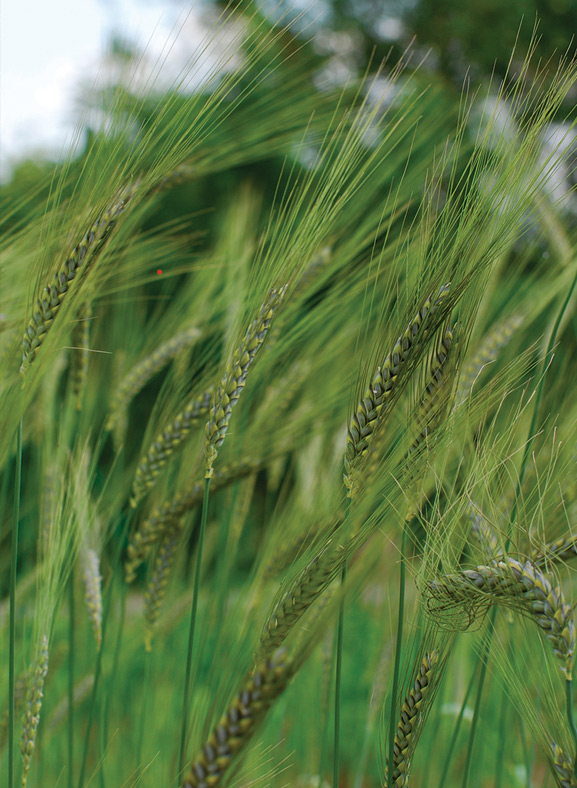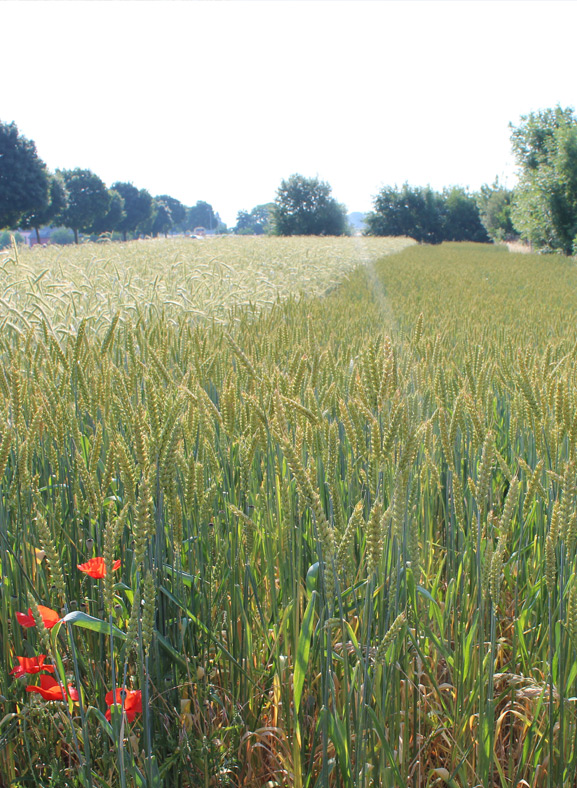


Why old-fashioned bread?
Wheat sensitivity has been steadily increasing for many years, with more and more people suffering from digestive or intestinal problems.
Modern wheat varieties contain a form of gluten that is more molecularly stable. This helps facilitate wheat production and baking but makes it more aggressive for the body. These new wheat varieties are selected according to their resistance to diseases -mainly against fungus – to the detriment of digestibility, and were developed to promote mechanical processing, which occurs at the expense of the respect to nutritional and digestive aspects for humans.
They also contain significant traces of pesticides, over-fertilisation with nitrogen, and of storage insecticides used to preserve grain.
These wheats are ground using roller mills rather than stone mills. As a result, the envelope (the bran) and the germ are separated from the grain (which contains most of the nutrients and fats), leading to a flour with a longer shelf life but less nutrients.
To ensure consistency in terms of bread quality, most bakeries make use of baker’s yeast or ready-made mixes often containing additives. Examples include modified starches, gluten extracts, ascorbic acid, denatured enzymes, mono- and di glycerides of fatty acids and heterocyclic aromatic.
Taken individually, these additives do not represent a major health problem, but combined they may cause well-known digestive issues.
It is why we have chosen to do everything in our power during each stage of production to get out the best of our wheat, naturally and without adding additives, adjuvants and other bread-making correctors.
In order to do this, our approach is to control the entire process.
Why old varieties of wheat?
First of all, old varieties of wheat are common property, they don’t belong to anyone, there are no patents. They are infinitely adaptable and healthy, therefore there is no need for fertilizers and pesticides. Thanks to their deeper root system and long stems, the grains contain on average 30% more minerals than modern wheat. They also have significantly less gluten than modern varieties, and their gluten is softer. The water-soluble protein content is higher than in modern wheat because the total protein content is normally higher, with less gluten, which is not water-soluble and difficult to digest.
How to keep these varieties?
Old varieties of wheat can only be preserved for long periods of time if they are used. Currently, there are still many old varieties in different seed banks. Not all of them can be cultivated, as some are too unstable, bend in the rain and wind, or have other problems. These plants have also been kept too long in very small quantities and outside of their normal growing conditions. They first have to readapt to their original environment.
What can we produce with it?
Contrary to popular belief that wheat from old varieties and from our regions is not suitable for breadmaking, almost all baked goods can be made with this wheat. However, this cannot be done industrially with machines. Modern wheat has been adapted for mechanical processing and not for the human digestive system.
What is the value of money of the old varieties?
The price is high, but the nutritional quality of old varieties is equivalent to this price. When correctly fermented, the components are fully broken down and additional vitamins are produced. Our body can absorb 100% of the minerals found in old wheat varieties, fermented over a long period of time using sourdough, whilst when it comes to high-yield varieties containing only 70% of minerals and fermented over a short period of time using yeast, the body can only absorb a maximum of 50%. Half of 70% is 35%. A bread made with ancient wheat varieties therefore has 2/3 more minerals then bread made with modern varieties. The difference in terms of taste is just as significant. The less gluten there is and the softer the gluten is the more digestible the bread. This is another sign of quality which justifies the price. In addition, the soil itself is not placed under stress, ground water is protected, and numerous small animals can stay in the fields and thus survive.
A wheat field with old varieties is also very beautiful to look at.
Annotation
We do not have external financial support – we do not receive any subsidy and we have to pre-finance everything ourselves. All our breads are shaped by hand and require us to invest extensive amounts of time in them. Before we made the very first bread, thousands of hours were spent baking.
